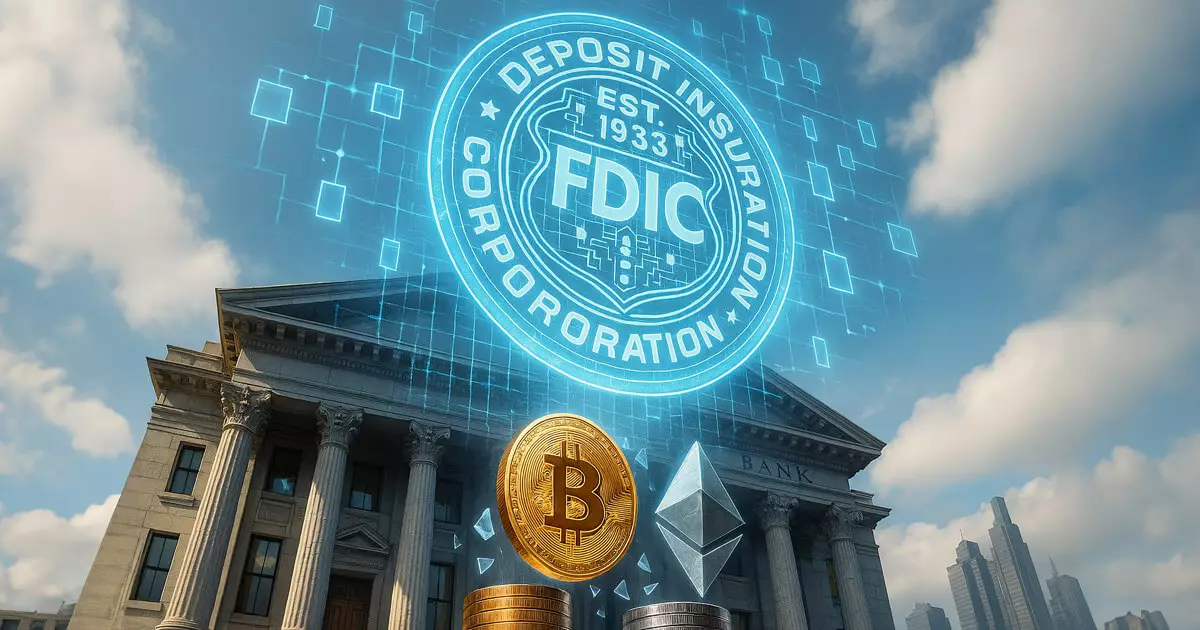The Federal Deposit Insurance Corporation (FDIC) is undergoing a transformative update concerning its approach to cryptocurrencies and blockchain technologies. This evolution is not simply about compliance; rather, it signifies a critical juncture for the U.S. banking system as regulators begin to unlock the doors to wider applications of decentralized technologies. Acting Chairman Travis Hill’s address at the American Bankers Association Washington Summit laid out a vision in which public, permissionless blockchains are no longer viewed as technological pariahs. This shift questions the antiquated attitudes of previous regulatory frameworks that entrenched banks in a conservative and risk-averse posture. By declaring that a total prohibition on public blockchain use is “too restrictive,” the FDIC is acknowledging the need for innovation—a necessary step in keeping U.S. banks competitive on a global scale.
As the world witnesses the rise of cryptocurrencies, U.S. regulators have often appeared weighed down by a cautious mentality. However, there is a sense that the time has come for reforming this mindset. The FDIC’s fresh perspective highlights the urgency to cultivate an environment where banks can explore the benefits of blockchain technologies without draconian limitations. The stakes are immense: banks must adapt, or they risk losing their relevance to more agile, tech-savvy competitors. The pressing need for transparency goes hand in hand with the responsibilities that come with such an empowered position.
Guardrails: Navigating the New Terrain
Despite this newfound permissiveness, Hill wisely emphasized that establishing robust “guardrails” is paramount. This delineation is crucial; it seeks to maintain the balance between enabling innovation and protecting the financial system’s integrity. The notion that regulatory boundaries should be flexible enough to accommodate the unique characteristics of public blockchains, yet firm enough to prevent misuse, is both a challenge and an opportunity. The FDIC is keen on assessing existing interagency guidelines, hinting at a collaborative approach that has often been elusive in federal regulatory efforts.
As Hill pointed out, the FDIC is tasked with tackling fundamental questions about how to define and supervise blockchain systems that straddle the distinctions between open and permissioned networks. Yet, the complexity of such configurations can’t be neglected. For banks to successfully engage with blockchain, a well-structured framework must be established that acknowledges the intricate nature of blockchain while also safeguarding against the risks inherent to its operation.
Tokenization: The New Frontier
Another fascinating aspect of Hill’s discussions concerns tokenized assets and their treatment under current regulations. Tokenization offers a revolutionary pathway for real-world assets to gain liquidity, but it simultaneously raises significant concerns. The notion “deposits are deposits, regardless of technology” is a profound recognition of the changing landscape. However, it also sends a stark warning about the need for safeguards against the potential chaos of asset withdrawals when traditional banking structures fail.
The FDIC’s caution regarding smart contracts post-bank failure scenarios reveals a deep understanding of modern banking’s inherent complexities. The ability to withdraw funds seamlessly via automated systems poses risks that traditional mechanisms may not be equipped to handle. As banks explore this new terrain, it’s vital to put in place measures that ensure a sustainable banking environment, particularly in times of crisis.
Stablecoins: The Double-Edged Sword
Emerging as a central theme was the need for clarity on stablecoins, which sit at the intersection of innovation and regulatory uncertainty. As Congress inches closer to legislative decisions covering stablecoin reserves, the FDIC’s intentions to evaluate pass-through deposit insurance regulations signify a proactive stance toward understanding this powerful tool’s intricacies. However, the balance of opportunity and risk is precarious.
The possibility of including stablecoins in the regulatory framework indicates a noteworthy evolution in how digital finance might coexist with traditional banking. This potential expansion must undergo rigorous scrutiny to ensure financial stability while not stifling innovation. The need for clear liquidity risk management frameworks and robust cybersecurity standards is non-negotiable, as their absence could jeopardize consumer trust—fundamental to both bank and customer success.
The FDIC’s approach is emblematic of a larger trend within the banking landscape: an evolving recognition that public sentiment toward digital assets is shifting. As public confidence in cryptocurrencies grows, U.S. regulators must be prepared to meet that reality with thoughtful, well-constructed regulations. The road ahead for the FDIC may be fraught with challenges, but this ongoing dialogue promises a richer, more inclusive financial future.















